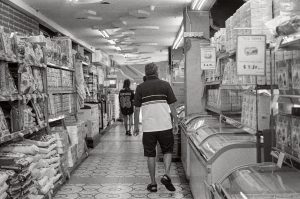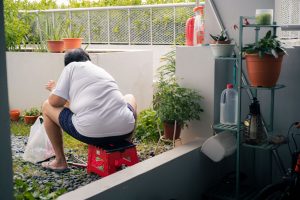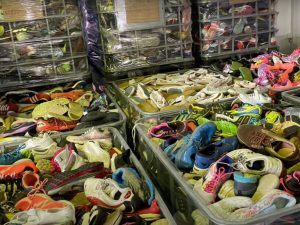This story was first and originally published on Kontinentalist. Featured image by Griselda Gabriele.
Singapore has started taking bold steps towards sustainable living in recent years. The Green Plan 2030 showcases a city-wide initiative to transform how we live, work, and play. And for many years, students and adults alike have been encouraged to reduce, reuse, and recycle products.
But bold as these efforts are, they may not be enough to bring everyone into the fold of a circular, green economy. The reason is simple: sustainable living is often too pricey for most consumers to go fully green.
How expensive are sustainable goods here in Singapore, and how much should prices be reduced to bring more people on board?
The price of going green
Indeed, going green is easier said than done. Many sustainable products come with a hiked-up price that many Singaporeans are unwilling or unable to pay for.
This is not to say that they don’t care—in fact, 4 out of 5 Singaporeans are concerned about the environment.
But practicality matters, too. That’s why only 35 per cent of these Singaporeans are willing to pay up to 10 per cent more for eco-friendly goods.
Just think about household staples. Kitchenware, tableware, household utensils, cleaning supplies, and other non-durable goods may be affordable in their usual forms. Still, their more eco-friendly counterparts are not nearly affordable enough to get Singaporean consumers to dedicate themselves to the green economy.
A sample of more than 210 household products shows that the average mark-up of eco-friendly household goods is approximately 156 per cent. That’s a massive premium; it’s no wonder most consumers are unwilling to go fully green.
Even other non-durable household goods like sustainable toilet paper or reusable bags—the least expensive item on the list—still see an overall price increase of 22 per cent.
Other types of household goods, such as plant-based soaps and reusable kitchen towels, are naturally not even on the table for discussion.
Is reusability worth it?
Despite the high figures, optimists might argue that sustainable products are worth it because they are reusable.
That’s valid, but this might not matter much to some consumers. After all, a lot of eco-friendly goods don’t actually save you money until months after they’re bought.
For those on a budget, it would make a lot more sense to buy a box of plastic wrap for S$3.36 instead of a pack of reusable silicone lids priced at S$18.30. You wouldn’t even see the cost benefits of the reusable lids until five months later—and that’s assuming you’re buying a box of plastic cling wrap each month.
The concept of short term gratification—choosing an immediate benefit over a longer-term one—is more than just a petty indulgence. It’s a very real issue for lower-income households, who may find it hard to afford more expensive green products because they cost more upfront.
Reimagining the costs of sustainable living
For sustainable living to become the next big thing in Singapore, the costs of sustainable products need to drop. But how much can this happen?
One way to answer this is to consider the fact that sustainable living is often an ideal that excludes lower-income groups, who do not have the capacity to pay higher prices for more environmentally friendly products.
Based on monthly household expenditures in Singapore in 2017/2018, the country’s lowest income group spends S$21.40 per month on household goods, from glassware to soap. Since few families are buying new plates and plastic cling wrap each month, we can look to soap and cleaning supplies for a more simple calculation since these products are generally bought regularly.
Unsustainable cleaning supplies cost an average of S$6.67—this could be laundry detergent, dish soap, a ten-pack of paper towels for the kitchen, or any combination of these. Since we know that the average low-income household in Singapore spends S$8.40 on soap and cleaning supplies each month, a premium for sustainable products shouldn’t exceed this.
If we go by that standard, a sustainability markup on cleaning supplies should be no more than 26 per cent. Right now, the sustainability markup for cleaning products is 286 per cent.
Clearly, there’s a huge gap that needs to be bridged.
An inclusive circular economy requires effort by corporations and the government
If Singapore is to become an all-inclusive circular economy, our eco-friendly brands and businesses will have to lower what their products cost.
But is lowering costs even possible, to begin with? From sourcing and processing to environmentally friendly licensing, sustainable products take more time and money to produce. Many small businesses cannot afford to sell sustainable products at a low price, especially given the lower demand for these products right now.
We’re stuck in a loop: high prices mean there’s insufficient demand for sustainable products, but they’re costly precisely because there is a low demand for them.
For this reason, a feasible solution must fall heavily on the shoulders of large corporations and governments. If big businesses such as Charmin actively phase out virgin toilet paper for recycled toilet paper, we’d likely see consumers turning to more sustainable products, causing prices to drop over time.
Unfortunately, we don’t see such actions from many corporations—after all, encouraging less consumption may ultimately reduce a company’s profits.
It’s not just about the money
While lowering costs could help consumers make more sustainable decisions, this isn’t the only important factor.
Let’s face it. Even if businesses lower costs, sustainable products are likely to be still more expensive. However, consumers have made it abundantly clear that they will buy more expensive goods for the environment as long as they are assured of some factors.
Culture also affects how we buy and whether we choose to buy in the first place. Making items last longer through reusing, repurposing, or repairing is a great way for anyone to practice sustainability. That said, lower-income communities already do this—and many in Asia still see buying new as a sign that one is financially secure. This hurts the environment, yes, but changing this must begin with those who already have the means to turn away from consumption as a habit.
It’s also worth slowing down to consider what exactly is in a price tag. Prices don’t often show an item’s true cost on the environment, whether its carbon emissions or its waste burden.
Lowering prices won’t change this; in fact, it makes things worse if done irresponsibly. A better approach may be to ask how we, as a society, might ensure that everyone can access daily necessities in ways that care for the environment.
Demanding change
The campaign to reduce, reuse, and recycle may achieve small wins in the battle to reverse the climate crisis, but our government will need to do much more to drive a circular economy full steam ahead. The Green Plan 2030 has tips and guidelines on what businesses can do to be more sustainable.
But any meaningful movement requires us to hold corporations accountable for the influential part they play in climate change while financially empowering small businesses that are attempting to bring a sustainable lifestyle to Singapore.
As individuals, we must demand change from those in charge and continue to be sustainable where possible. A pack of virgin toilet paper is S$6.93, while a pack of sustainable toilet paper is S$7.19. This $0.26 difference may not seem like much. But if we all were to replace one of our regular toilet paper rolls with a recycled roll, we’d save 544,000 trees. Our earth will thank us later.







